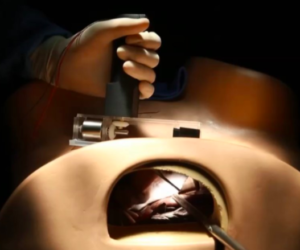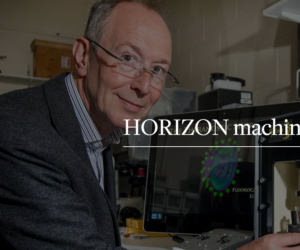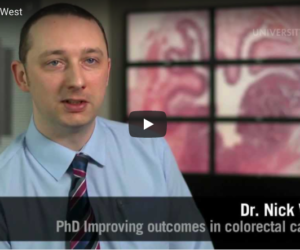Collaboration Opportunities
If you have an interest in, and would like to collaborate on any of the following areas, please contact us:
Engineering and RoboticsProject 1: Magnets and surgical instruments for abdominal surgery
Project 2: Learning the behaviours of surgeons in keyhole surgery
Project 3: Virtual reality systems to train surgeons and new users
Project 4: 3D mesh which allows the surgeon to draw regions of interest so that only the areas of interest are operated on.
Project 5: Augmented surgery to avoid entanglement issues.
Project 6: Using haptics for measuring pressure forces during surgery
Project 7: Minimising tissue trauma due to graspers or instruments
Project 8: Understanding tissue and how it reacts when a device comes into contact with it and how that is dissipated in terms of trauma.
Project 9: Bio-implantable remote sensors that can detect tissue stiffness, can be sterilised and pressure sensors for minimising tissue trauma.
Project 10: Semi-autonomous robotics using artificial intelligence and surgical experience (pattern recognition from previous procedures).
Project 1: Developing realistic in silico and in vivo models that more precisely recapitulate the tumour and its micro/macro environment, to enable comprehensive dissection of the relevant mechanisms governing the transition from normal colorectum to the different malignant stages of the disease.
Project 2: Develop and share appropriate model systems that mimic different premalignant/malignant stages of colorectal cancer.
Project 3: Developing precise pathological assessment of colorectal cancer.
Project 4: Impact of Anastomosis Type on Complications Following Right hemicolectomy
Project 5: Develop artificial intelligence colonoscopy video library
Project 6: Mesh alternatives and magnetic sphincter trials for patients
Project 7: Addressing the variation of incontinence care regarding NHS pathways.
Project 8: Tissue engineering for the gastrointestinal tract
Project 9: Integrated near-infrared sensor capable of selectively identifying colon carcinoma cells in tumour margins labelled with high yield fluorescent nanoparticles
Project 1: The role of the gut microbiome and how it can be exploited to improve colorectal cancer disease outcomes.
Project 2: The use of liquid biopsies
Project 3: Increasing the accuracy and reproducibility of morphological prognostic factors.
Project 4: Digital pathology, translational bioinformatics and machine learning to underpin algorithm development for risk prediction/disease stratification.
Project 5: Translation of discovery research findings on the molecular pathogenesis of IBD-associated neoplasia to improve utility and cost-effectiveness of screening approaches at the population level.
Project 6: Standardised approaches for pathology specimen analysis.
Project 7: Devices that identify specimen that are unlikely to show significant pathology
Project 8: Intra-operative histopathological diagnosis (preliminary).
Project 1: Design and implement prospective high-quality pan-population studies of risk factors for colorectal cancer, with robust clinical/pathological data, supporting blood and tissue samples, to inform a population-based assessment of risk.
Project 2: Delivery of high-quality robust long-term studies that identify the appropriate level of intervention including dose, duration, timing, feasibility and acceptability as well as a clinically relevant outcomes.
Project 3: Methods to ensure optimal evaluation of new surgical and radiotherapy-related devices and procedures to demonstrate appropriately robust clinical and cost-effective outcomes.
Project 1: Embedding research randomised controlled trials in FIT-based screening programmes to explore the optimal FIT threshold and/or the role of flexible sigmoidoscopy, incorporating risk adjustment algorithms.
Project 1: Develop nanoparticle small molecule for model spray technology
Project 2: Develop In silico trials to simulate device performance and outcomes, with virtual subjects/statistical populations.
Project 3: Collaborations to look at the interaction between wall and fluid. e.g. angioplasty – shear stress – viability cells,
Project 4: Method of accurately determining outcome following aortic aneurysm surgery
Project 5: Ultrafast laser to remove blood clots
Project 6: Endovascular device to abolish restenosis risk
Project 7: Intelligent prosthetic legs
Project 8: Dressing with wound environment monitoring
Project 9: Laboratory on a plaster (rapid assessment of biomarkers to diagnose and monitor disease, and update patient data using artificial intelligence)
Project 1: Pancreas (early detection, iron particles, antibodies, chemotherapy). There are currently 62 pathways for treatment of pancreatic cancer. We need to make chemotherapy better by using nanoparticles so that treatment gets to the cells.
Project 2: Liver (tumour removal – deep and superficial). Clinicians currently use intra-operative ultrasound however this is not ideal for seeing into the liver which is solid and opaque. The real need is for solutions to map preoperative imaging onto liver, and do an overlay. This technology should be multi-modality, identify landmarks and cope with the movement/distortion of liver.
Project 3: Simple test (blood/breath) that identified very early on which patient suffering an attack of acute pancreatitis will go on to develop complications so that care can be optimised
Project 4: Improved organ preservation and artificial organs
Project 5: In vitro long-term liver scaffold perfusion device
Project 6: Device to eliminate/reduce the risk of pancreatic leak after pancreatic surgery
Project 7: Intelligent devices to rapidly and effectively transect liver tissue laparoscopically
Project 1: Novel technologies/interventions that have the potential to improve curative outcomes for cancer.
Project 2: The use of the XCM BIOLOGIC® Tissue Matrix for abdominal wall hernia repair and other soft tissue reconstruction applications
Project 3: Developing a comprehensive peri-operative information sharing app/system
Project 4: Development of new nanoparticles for theranostics (diagnosis and treatment).
Project 5: Intraoperative real-time imaging – technology must collect/integrate the best pre-operative imaging data (this can come from CT/MR/PET scans) and offer flexibility of input reference points.
Project 6: Biomarkers for early detection
Project 7: Wearable to monitor post-operative recovery at home
Project 8: Temporary/removable intra-abdominal monitor for anastomotic leaks or high-risk anastomoses
Project 9: Immuno-detector to quantify your immune competence for surgery
Project 10: Physiological monitoring – poor outcome prediction, influence patient outcome.
Project 11: Biosensing preoperatively.



